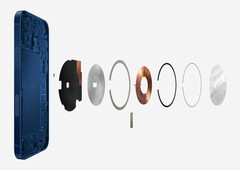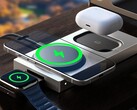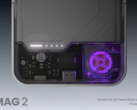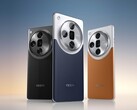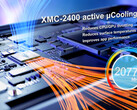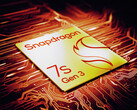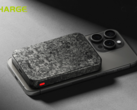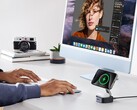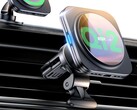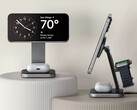The Qi2 standard was announced at the beginning of 2023 and is technically near-identical to Apple's MagSafe (as known from the iPhone 15). This is by no means a coincidence, as the technology behind the standard was made available to the Wireless Power Consortium by Apple.
This has advantages for everyone involved: Qi2 accessories are compatible with the iPhone and are cheaper, as no fees have to be paid to Apple, while buyers of Android smartphones with Qi2 support can also use MagSafe accessories. At launch, Wireless Power Consortium announced that Qi2 consists of two components: the Magnetic Power Profile (MPP), which allows for the magnetic attachment of accessories and for precise alignment on a charger, and the Extended Power Profile (EPP), which enables wireless charging with up to 15 watts on Qi2 chargers, but does not necessarily require magnets.
The logo guidelines of the Wireless Power Consortium state that products that do not have magnets must still be marketed with the old Qi logo. So if you want to buy a Qi2 product with support for magnetic accessories, you only need to look out for the Qi2 logo. In practice, it may not always be quite so simple.
The table below can also be found on the official Qi website, as discovered by developer Mishaal Rahman, which prompted websites such as Android Headlines to speculate that the Google Pixel 9 may support Qi2 after all. According to this table, the logo originally intended for Qi2 designates products that do not support magnets, while the same logo framed by a circle was intended to denote the Magnetic Power Profile.
Since this logo (Qi2 in a circle) has been used rather sporadically in the past, a Notebookcheck editor spoke to one of the companies responsible at CES. Accordingly, it is an outdated logo that will no longer be used. This can be seen in the HMD Skyline, the first Android smartphone with support for Qi2, including Magnetic Power Profile, which is marketed with the Qi2 logo without the circle.
As it cannot be ruled out that individual manufacturers will not adhere to the latest guidelines or simply market Qi2 products without MPP support as Qi2-compatible, it is nevertheless advisable to look up a product in the Wireless Power Consortium database before purchasing it. There, over 600 Qi2 products are listed, most of which, but not all, support the Magnetic Power Profile.
Source(s)
Wireless Power Consortium (Logo guidelines | Logo versions | Press release) | Mishaal Rahman (X) | Nokiamob




